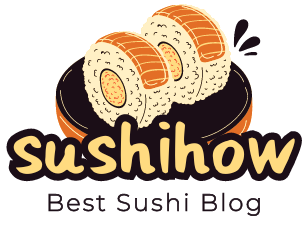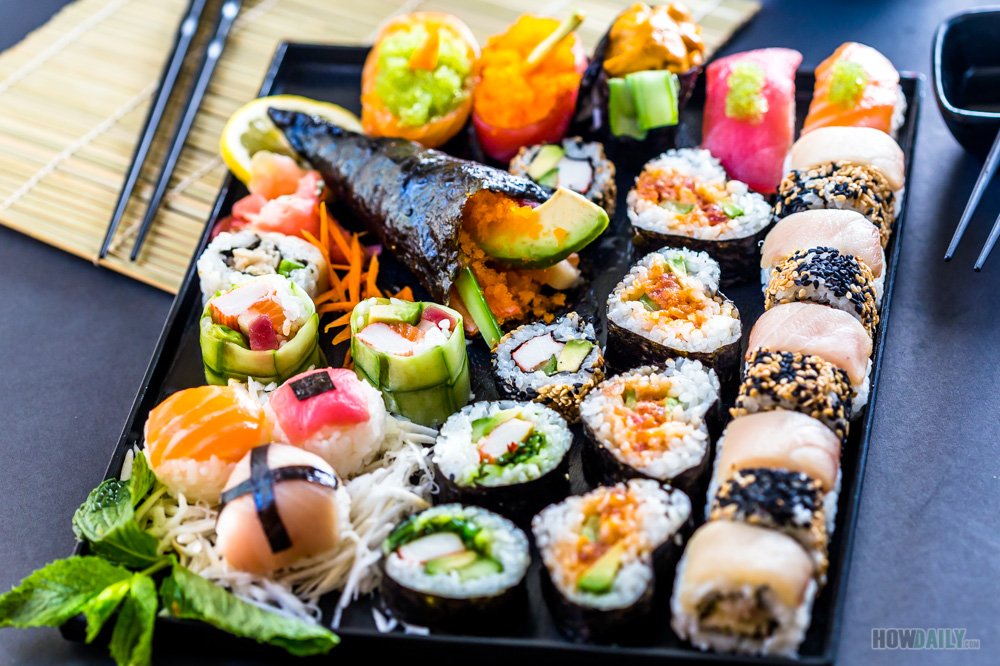Japan boasts many varieties of sushi. Some varieties are well-known internationally while others may only be found locally – like Kakinoha-zushi made of vinegar rice wrapped around fish wrapped with persimmon leaves in Nara region.
Makizushi (rolled sushi, which is more familiar to Westerners) and funazushi, the latter made from locally produced deep-fried tofu), are also among the nine major types of sushi found throughout Japan. Here’s a quick introduction.
Nigiri
People often think of sushi as being made up solely of raw fish slices; however, its true core lies in its slightly acidic rice preparation process. Nigiri sushi originated in Edo (now Tokyo). It consists of hand-formed blocks of vinegared rice topped with various ingredients – most frequently thin slices of fresh seafood – then covered by layers of nori seaweed sheets to protect the delicate flavorings.
Nigiri sushi is unique because it can be eaten with your hands – an ideal solution for beginners who have graduated beyond tamago-yaki or gyusushi.
Nigiri (to grasp or seize) refers to hand-formed rice balls pressed between thumb and index finger of either hand to create indents or shapes that will prevent its crumbling when raw seafood is added to it.
Maki
Sushi may be best known for being made from raw fish, but its definition can extend far beyond this category of dish. Sushi refers to any meal featuring vinegared rice with toppings or fillings such as cooked fish, scrambled egg, pickled vegetables or even raw seafood such as roe.
Maki dishes start off the same way: cooked sushi rice flavoured with vinegar is combined with various ingredients and then shaped or rolled to create different forms. One popular example is makizushi, consisting of a roll encasing various ingredients that is then cut into bite-size rounds for serving.
Gunkan sushi consists of rice and seafood served in a cone shape of nori; temakizushi uses hand-formed clumps of sushi rice with toppings rolled together; and inari zushi utilizes deep-fried tofu skin pouches as containers to showcase Japanese culinary craftsmanship. Each form offers its own special sensory experience.
Edomae
Edomae sushi first emerged in Tokyo (then known as Edo) between 1603-1868. This form of Japanese fast food remains one of the most beloved varieties today.
An Edo (now Tokyo) sushi chef invented this cuisine by hand-molding bite-size pieces of raw fish onto vinegared rice to serve as quick snacks for travelers on their travels. Due to lack of refrigeration at that time, these toppings had to remain extremely fresh; many techniques were utilized for preservation.
As Japan modernized, new ingredients became available and sushi chefs started using them in their dishes – although the original combination of steamed rice and molded fish remains central to nigirizushi dishes served either in bowl form or wrapped up as tamagoyaki rolls for easy wrapping – typically garnished with wasabi and pickled daikon radish (takuan), served as an appetizer course.
Oshizushi
Most people picture sushi as being made up of raw fish topped by a hand-shaped clump of vinegared rice, but its versatility lies elsewhere. Edomae chirashizushi (scattered sushi) is one form of this food served on tables along with rice and garnishes while Oshizushi or “pressed sushi” is also popularly enjoyed as an option.
This dish consists of a rectangular block of seasoned short grain rice combined with flavorful fillings that is meticulously assembled into an oshibako wooden mold, then carefully compressed through pressing to produce beautiful layers of soft rice and flavorful fillings that provide an exquisite combination of textures and umami experiences.
Oshizushi from Iwakuni features stunning ingredients reminiscent of castle town: Denbu (pickled Iwakuni lotus root), traditional vegetable chisha, conger eel stew and kinshi eggs – it’s an irresistibly tasty culinary experience that perfectly showcases Iwakuni as an ancient domain while making an elegant impression at any special event or celebration.
Funazushi
Sushi cuisine in Japan is vastly varied. Many regional styles exist and some even take the form of unique shapes like Toyo’s temarizushi or Nara’s pizza-shaped kakinohazushi. Alongside fish fillets, these dishes may include other toppings such as walnuts, miso sauce, wild vegetables like mugwort and bamboo shoots as well as various mushrooms.
Funazushi sushi is an intriguing example of fermented sushi that stands apart from fresh varieties, and dates back centuries as an early way to preserve fish without refrigeration. Produced using Nigororobuna carp from Lake Biwa in Shiga Prefecture and fermented for one to three years at Kitashina Company’s 18 generation old workshop; funazushi was even given to soldiers on front lines as nourishment by Hideyoshi Toyotomi during battle!
California roll
California rolls are one of the most beloved sushi rolls in America. Made up of hand-pressed cylinders of rice topped with various ingredients and wrapped in nori seaweed before rolling on bamboo sushi mats for added flavor and color, sprinkle a pinch of togarashi for extra spice and zest!
Togarashi is an aromatic blend of seven distinct spices that is widely available at Japanese specialty markets and home kitchens alike. You can even create it yourself using readily-available U.S. ingredients; if unavailable, chili powder could serve as an alternate solution.
No one knows for certain who invented the California roll, but many believe that it originated as a hybrid between traditional Japanese sushi rolls such as futomaki and kappamaki and ingredients more familiar to Western palates. California rolls may have even been created by enterprising immigrant chefs from Japan who successfully blended both culinary traditions of their homeland with those from their adopted nation’s tastes into this popular Western dish.

